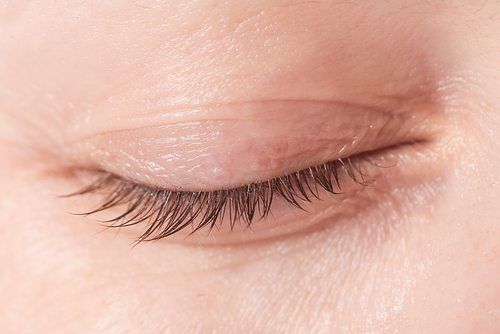As the foremost authority in vision care, Jackson Davenport Vision Center, located in Summerville, South Carolina, we know how aggravating and, sometimes embarrassing, a twitching eyelid can be. Eye twitching, eyelid tics, and spasms are pretty common. Most eye twitches come and go, but sometimes a twitching eye can last for weeks or even months. This article will explain eyelids twitches, the types and causes of twitches, and when you should consider seeing an optometrist.
What are Eye Lid Twitches?
An eyelid twitch, or myokymia, is a repetitive, involuntary spasm of the eyelid muscles. A twitch usually occurs in the upper lid, but it can occur in both the upper and lower lids. For most people, these spasms are very mild and feel like a gentle tug on the eyelid. Others may experience a spasm strong enough to force both eyelids to close completely; this is a different condition called blepharospasm.
Spasms typically occur every few seconds for a minute or two. Episodes of eyelid twitching are unpredictable as the twitch may occur off and on for several days. Then, you may not experience any twitching for weeks or even months. The twitches are painless and harmless, but they may bother you. Most spasms will resolve on their own without the need for treatment. In rare cases, eyelid spasms may be an early warning sign of a chronic movement disorder, especially if other facial twitches or uncontrollable movements accompany the spasms.
What Are the Types of Eye Lid Twitches?
A minor eyelid twitch is often associated with lifestyle factors such as stress and alcohol. It can also result from irritation of the surface of your cornea or the membranes that line your eyelids (conjunctiva).
Benign essential blepharospasm usually shows up in mid-to late-adulthood and gradually gets worse. Only about 2,000 people a year are diagnosed with it in the United States. Women are twice as likely to get it as men. While it is not a serious condition, more severe cases can interfere with your daily life.
Benign essential blepharospasm begins with nonstop blinking or eye irritation. As it gets worse, you may be more sensitive to light, get blurry vision, and have facial spasms. In serious cases, the spasms can become so intense that your eyelids stay shut for up to several hours. Researchers believe it results from a mix of environmental and genetic factors. Although the condition is usually random, it sometimes runs in families.
A hemifacial spasm is rare. It involves both the muscles around your mouth and your eyelid. Unlike the other two types, it usually affects only one side of the face. Most often, the cause is an artery pressing on a facial nerve.
What Causes My Eye to Twitch?
Stress. While we are all under stress at times, our bodies react in different ways. A twitching eye can be one sign of stress, especially when it is related to vision problems such as eye strain. Yoga, breathing exercises, spending time with friends or pets, and getting more downtime into your schedule are among the many ways to reduce the stress that may be causing the twitch.
Tiredness. A lack of sleep, whether because of stress or some other reason, can trigger a twitching eyelid. Catching up on your sleep can help.
Eye strain. Vision-related stress can occur if, for instance, you need glasses or a change of glasses. Even minor vision problems can make your eyes work harder, triggering eyelid twitching. Schedule an eye exam and have your vision checked and your eyeglass prescription updated.
Caffeine. Too much caffeine can trigger eye twitching. Try cutting back on coffee, tea, chocolate, and soft drinks (or switch to decaffeinated versions) for a week or two and see if your eye twitching disappears.
Alcohol. Try abstaining for a while since alcohol also can cause eyelids to twitch.
Dry eyes. Many adults experience dry eyes, especially after age 50. Dry eyes are also very common among people who use computers, take certain medications (antihistamines, antidepressants, etc.), wear contact lenses, and consume caffeine and/or alcohol. If you are tired and under stress, this too can increase your risk of dry eyes. If you have a twitching eyelid and your eyes feel gritty or dry, see your eye doctor for a dry eye evaluation. Restoring moisture to the surface of your eye may stop the spasm and decrease the risk of twitching in the future.
Nutritional imbalances. Some reports suggest a lack of certain nutritional substances, such as magnesium, can trigger eyelid spasms. Although these reports are not conclusive, we cannot rule this out as a possible cause of a twitching eye. If you are concerned that your diet may not be supplying all the nutrients you need, I suggest talking this over with your family doctor for expert advice rather than randomly buying over-the-counter nutritional products.
Allergies. People with eye allergies can have itching, swelling, and watery eyes. When eyes are rubbed, this releases histamine into the lid tissues and the tears. This is significant because some evidence indicates that histamine can cause eyelid twitching. Many eye doctors have recommended antihistamine eye drops or tablets to help some eyelid twitches to combat this problem. But remember that antihistamines also can cause dry eyes. It is best to work with your eye doctor to make sure you’re doing the right thing for your eyes.
When Should I See a Doctor About Eye Lid Twitching?
Schedule an appointment if you are experiencing any of the following:
- The twitch lasts for more than 1 week
- Your eyelid closes completely
- Spasms involve other facial muscles
- You see redness, swelling, or discharge from an eye
- Your upper eyelid droops
If your doctor suspects a brain or nerve problem, you may be referred to a neurologist or other specialist.
How Are Eye Lid Twitches Treated?
In most cases, a minor twitch will go away on its own. Make sure you get enough rest and cut back on alcohol, tobacco, and caffeine. If dry eyes or irritated eyes are the cause, try over-the-counter artificial tears. That can often ease a minor twitch. Thus far, doctors have not found a cure for benign blepharospasm. But several treatment options can make it less severe.
The most widely used treatment is botulinum toxin (Botox, Dysport, Xeomin). This is also often used with a hemifacial spasm. A doctor will inject small amounts into your eye muscles to ease the spasms. The effect lasts a few months before it slowly wears off, so you will likely repeat treatment.
Another option is surgery. In a procedure called a myomectomy, your surgeon will remove some of the muscles and nerves around your eyelid. Surgery can also relieve the pressure on the artery on your facial nerve that causes a hemifacial spasm. The results are permanent, but as with any operation, there is a chance for complications.
While a twitching eyelid is more of a nuisance than an eye health issue, reoccurring and prolonged twitching could be a sign of something more serious. If you are experiencing eyelid twitching or would like to schedule an eye exam, call the optometrist at Jackson Davenport Vision Center.

